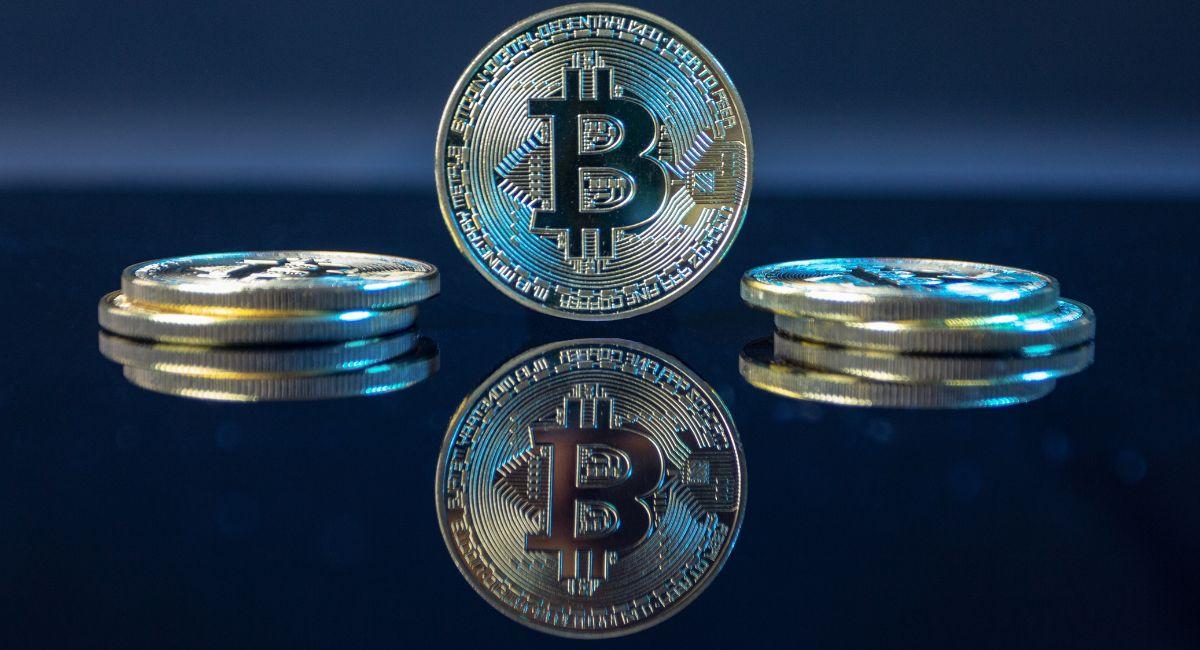The Potential Impact Of ETFs On Bitcoin Price In 2024: Intriguing Investment Wave
The arrival of a Bitcoin ETF (Exchange-Traded Fund) in 2024 could significantly impact the Bitcoin price. Here’s a breakdown of the potential effects:
Increased Accessibility:
- ETFs offer a familiar and regulated investment vehicle for mainstream investors. A Bitcoin ETF could attract new money to the market, potentially driving up demand and price.
Enhanced Market Legitimacy:
- A successful Bitcoin ETF would represent a major step towards mainstream acceptance of cryptocurrency. This increased legitimacy could further attract institutional investors, adding even more fuel to the price.
Potential for Volatility:
- An influx of new investors unfamiliar with crypto’s inherent volatility could lead to short-term price swings as they react to market movements. This could create a more volatile trading environment in the short term.
Price Discovery:
- ETFs could introduce a new price discovery mechanism for Bitcoin. The way the ETF is structured and how it tracks the underlying asset could influence the overall price of Bitcoin.
Uncertainties Remain:
- The US Securities and Exchange Commission (SEC) has yet to approve a Bitcoin ETF. Regulatory hurdles and concerns about market manipulation could still delay or even prevent a Bitcoin ETF launch in 2024.
Potential Impacts of ETFs on Bitcoin Price in 2024
The launch of spot Bitcoin ETFs in early 2024 marked a significant milestone for the cryptocurrency industry. These exchange-traded funds allow investors to gain exposure to Bitcoin through a traditional investment vehicle, potentially impacting the price of Bitcoin in several ways. Here’s a breakdown of the top 10 potential impacts:
Increased Demand and Price Surge:
- Institutional Inflow: ETFs cater to institutional investors who may have previously been hesitant to enter the complex and volatile world of cryptocurrency directly. The ease and familiarity of ETFs could unlock a wave of institutional investment, driving up demand for Bitcoin and potentially pushing the price higher.
- Retail Investor Participation: ETFs with lower investment minimums compared to buying Bitcoin directly could attract a broader range of retail investors. This increased participation could lead to a significant rise in demand, potentially leading to price appreciation.
Market Legitimization and Stability:
- Enhanced Credibility: The SEC approval of spot Bitcoin ETFs signifies a level of legitimacy for Bitcoin and the cryptocurrency market as a whole. This could attract more traditional investors who view regulatory oversight as a positive step.
- Reduced Volatility: Increased institutional involvement often brings stability to an asset class. With more sophisticated players entering the market, the price fluctuations of Bitcoin could potentially become less erratic.
Long-Term Growth and Sustainability:
- Improved Liquidity: ETFs can significantly increase the liquidity of Bitcoin by creating a readily tradable asset on established stock exchanges. This improved liquidity could attract more investors and facilitate smoother price discovery.
- Diversification Opportunities: ETFs that hold a basket of cryptocurrencies alongside Bitcoin can offer investors diversified exposure to the digital asset space. This could further entice investors seeking exposure to the potential growth of cryptocurrency without the risk of solely holding Bitcoin.
Also, read – Bullish on Bitcoin ETFs: Bitwise CIO Points to Success and 13F Optimism
Indirect Impacts and Ecosystem Effects of ETFs on Bitcoin Price: A Butterfly Effect in Cryptoland
The launch of spot Bitcoin ETFs in 2024 isn’t just about directly affecting the price of Bitcoin. These financial instruments have the potential to trigger a ripple effect across the entire cryptocurrency ecosystem, indirectly impacting Bitcoin’s price and overall market dynamics. Here’s a closer look at some of these potential indirect impacts:
1. Improved Infrastructure and Security:
- Increased Investment Spurs Innovation: The influx of capital through ETFs could incentivize investment in developing more robust infrastructure for trading and storing cryptocurrency. This could include advancements in secure storage solutions, efficient trading platforms, and sophisticated risk management tools. By enhancing overall security and user experience, these improvements could attract a wider range of investors, potentially leading to a more stable and healthy Bitcoin market environment, indirectly benefiting the price.
- Regulatory Push for Clarity: The rise of ETFs could put pressure on regulators to provide clearer guidelines for the cryptocurrency industry. This could lead to the development of a more comprehensive regulatory framework, which, while potentially introducing some restrictions, could also bring greater transparency and stability to the market. This increased confidence might entice more conservative investors, ultimately boosting demand for Bitcoin.
2. The Domino Effect on Altcoins:
- Spillover Effect: Increased mainstream interest in Bitcoin due to ETFs could create a domino effect, boosting the prices of other cryptocurrencies (altcoins) as well. As Bitcoin becomes more recognized and potentially attracts new investors, some might explore the broader crypto landscape, leading to increased demand for altcoins with unique functionalities or investment propositions. This surge in altcoin interest could indirectly benefit Bitcoin by solidifying its position as the gateway to the cryptocurrency space.
- Diversification Strategies: The emergence of diversified crypto ETFs holding a basket of assets alongside Bitcoin might further fuel altcoin adoption. Investors seeking exposure to the digital asset space without the sole risk of Bitcoin’s price fluctuations might find these diversified ETFs appealing. This broader market participation in altcoins could indirectly contribute to a more vibrant and potentially more valuable overall cryptocurrency ecosystem, potentially benefiting Bitcoin as a whole.
3. The Talent Acquisition Arms Race:
- Demand for Skilled Professionals: The growth of the ETF market could lead to an increased demand for skilled professionals with expertise in both traditional finance and cryptocurrency. This “brain drain” from established financial institutions might force them to become more crypto-savvy to compete for talent. This could lead to a more positive perception of cryptocurrency within traditional finance, indirectly impacting the overall reputation and potentially the price of Bitcoin.
4. The Education Catalyst:
- Spreading Crypto Knowledge: The rise of ETFs could trigger a wave of educational initiatives aimed at informing investors about Bitcoin and the broader cryptocurrency space. This could involve investment firms, financial institutions, and even educational platforms developing educational resources to equip investors with the knowledge to make informed decisions. Increased public understanding might lead to a more informed and potentially more bullish market sentiment towards Bitcoin.
The Butterfly Effect in Action:
The launch of Bitcoin ETFs is akin to the butterfly effect in chaos theory. A seemingly small event (the ETF launch) can have far-reaching and unpredictable consequences across the entire cryptocurrency ecosystem. While some of these indirect impacts might be positive for Bitcoin’s price, others could introduce new challenges. By closely monitoring these developments, we can gain a better understanding of how ETFs are shaping the future of Bitcoin and the cryptocurrency landscape as a whole.
Potential Challenges and Considerations of ETFs on Bitcoin Price: A Deep Dive
The introduction of spot Bitcoin ETFs in 2024 has undoubtedly shaken up the cryptocurrency space. While these exchange-traded funds offer exciting possibilities for increased investment and market stability, they also present some potential challenges and considerations that could impact the price of Bitcoin. Let’s delve deeper into these complexities:
1. The Structure of the ETF: Physical vs. Futures-Based
- Physical ETFs: These hold actual Bitcoin in reserve, mirroring the price movements of the underlying asset. This can be positive for Bitcoin’s price as it directly reduces the circulating supply available for purchase in the open market. However, physically holding Bitcoin presents logistical challenges and security concerns for ETF providers, potentially leading to higher management fees for investors.
- Futures-Based ETFs: These track the price of Bitcoin futures contracts instead of holding the actual asset. This approach avoids the complexities of physical storage but can introduce a “tracking error.” The ETF price might not perfectly reflect the spot price of Bitcoin, creating a disconnect between the two. Additionally, futures contracts often trade at a premium or discount to the spot price, which can further impact the price relationship between the ETF and Bitcoin.
2. Regulatory Uncertainty: A Looming Cloud
The regulatory landscape surrounding cryptocurrency remains fluid. While the SEC’s approval of spot Bitcoin ETFs signifies a step forward, future regulatory changes could significantly impact the ETF market. Potential restrictions on how ETFs operate or invest in Bitcoin could dampen investor enthusiasm and lead to price fluctuations.
3. Tracking Error and Transparency Concerns:
- Accuracy of Tracking: Even well-designed ETFs can experience tracking errors, meaning the price of the ETF might not perfectly mirror the price of Bitcoin. This can occur due to factors like fees associated with futures contracts, rebalancing needs, and the underlying mechanics of the ETF structure. These discrepancies can affect investor confidence and potentially lead to price volatility.
- Transparency of Holdings: Depending on the ETF structure, there might be a lack of transparency regarding the underlying assets held by the fund. This can create uncertainty for investors who might not be fully aware of the specific risks associated with the ETF’s holdings.
4. Limited Liquidity for Large Investments:
While ETFs can improve overall Bitcoin liquidity, concerns might arise when it comes to very large investments. The underlying Bitcoin market might not have enough readily available supply to accommodate extremely large ETF purchases without causing significant price swings.
5. Potential for Manipulation:
The influx of institutional capital through ETFs could introduce new opportunities for market manipulation. Large investors with significant holdings in the ETF could potentially influence the price of Bitcoin, especially if the underlying liquidity of Bitcoin remains limited.
6. Impact on Decentralization:
A core tenet of Bitcoin is its decentralized nature. The widespread adoption of ETFs, particularly those with a centralized structure, could raise concerns about the long-term decentralization of Bitcoin. If a significant portion of Bitcoin becomes tied up in ETFs, it could theoretically give more control to the entities managing these funds.
A Balancing Act
The arrival of Bitcoin ETFs presents both opportunities and challenges for the price of Bitcoin. While increased demand and market legitimacy are potential upsides, regulatory uncertainty, tracking errors, and liquidity concerns require careful consideration. Understanding these complexities and navigating the evolving regulatory landscape will be crucial in determining the true impact of ETFs on Bitcoin’s price trajectory in the years to come.
Looking Ahead:
Despite the uncertainties, the potential arrival of a Bitcoin ETF in 2024 is a significant development for the cryptocurrency market. If approved, it could be a major catalyst for broader adoption and price appreciation. However, investors should remain cautious and conduct their own research before making any investment decisions.
Additional Considerations:
- Keep an eye on news and developments surrounding potential Bitcoin ETFs in 2024.
- Consider the potential risks and rewards associated with investing in a Bitcoin ETF.
- Don’t base your investment decisions solely on speculation about ETF impacts.
By understanding the potential influence of ETFs and conducting thorough research, you can make informed choices about your cryptocurrency investments in 2024.
Stay informed with daily updates from Blockchain Magazine on Google News. Click here to follow us and mark as favorite: [Blockchain Magazine on Google News].
Get Blockchain Insights In Inbox
Stay ahead of the curve with expert analysis and market updates.
latest from tech
Disclaimer: Any post shared by a third-party agency are sponsored and Blockchain Magazine has no views on any such posts. The views and opinions expressed in this post are those of the clients and do not necessarily reflect the official policy or position of Blockchain Magazine. The information provided in this post is for informational purposes only and should not be considered as financial, investment, or professional advice. Blockchain Magazine does not endorse or promote any specific products, services, or companies mentioned in this posts. Readers are encouraged to conduct their own research and consult with a qualified professional before making any financial decisions. The featured image used is just a creative depiction of the title and it does not intend to hurt sentiments of any person or institution. If it hurts anyone sentiments, please do not hesitate to reach out to Blockchain Magazine.

 Bitcoin
Bitcoin  Ethereum
Ethereum  XRP
XRP  Tether
Tether  Solana
Solana  USDC
USDC  Dogecoin
Dogecoin  Cardano
Cardano  Lido Staked Ether
Lido Staked Ether  TRON
TRON  Wrapped Bitcoin
Wrapped Bitcoin  Chainlink
Chainlink  Wrapped stETH
Wrapped stETH  Avalanche
Avalanche  Sui
Sui  Stellar
Stellar  Litecoin
Litecoin  Toncoin
Toncoin  Shiba Inu
Shiba Inu  Hedera
Hedera  LEO Token
LEO Token  USDS
USDS  Hyperliquid
Hyperliquid  Polkadot
Polkadot  WETH
WETH  MANTRA
MANTRA  Bitcoin Cash
Bitcoin Cash  Bitget Token
Bitget Token  Ethena USDe
Ethena USDe  Wrapped eETH
Wrapped eETH  Uniswap
Uniswap  Monero
Monero  NEAR Protocol
NEAR Protocol  Pepe
Pepe  WhiteBIT Coin
WhiteBIT Coin  Aave
Aave  Bittensor
Bittensor  Ondo
Ondo  Aptos
Aptos  Internet Computer
Internet Computer  Dai
Dai  Official Trump
Official Trump  Ethereum Classic
Ethereum Classic  Mantle
Mantle  Tokenize Xchange
Tokenize Xchange  OKB
OKB  Gate
Gate  sUSDS
sUSDS  Sonic (prev. FTM)
Sonic (prev. FTM) 




